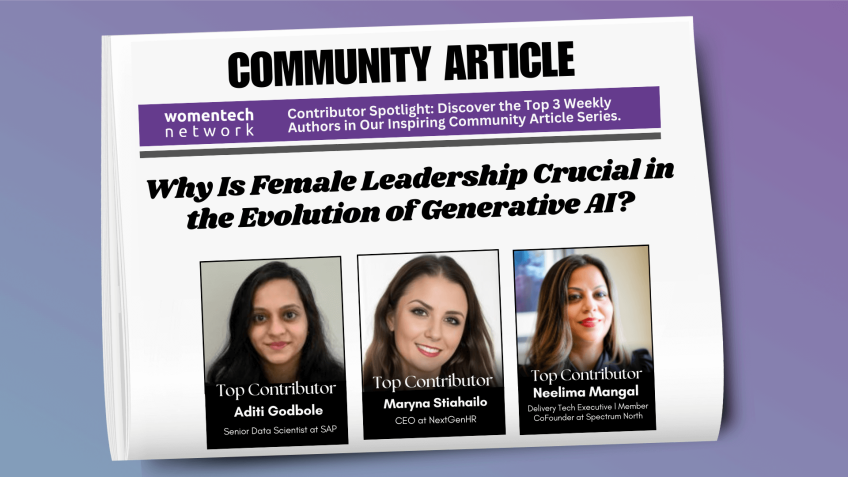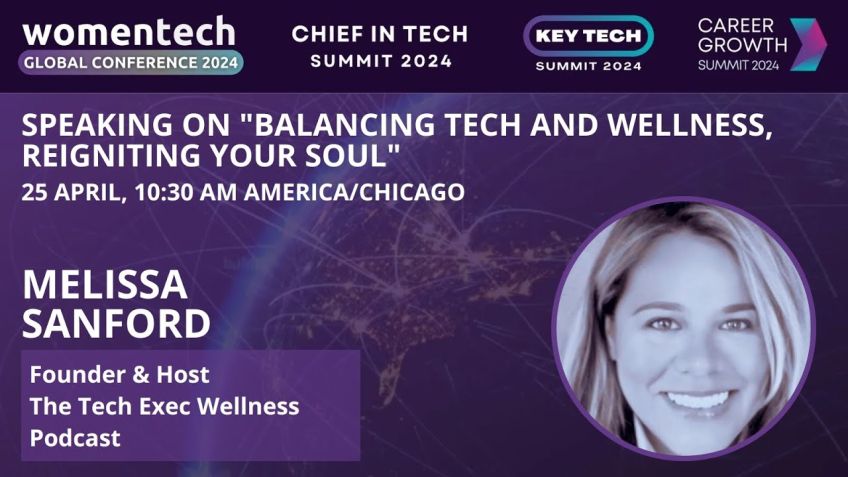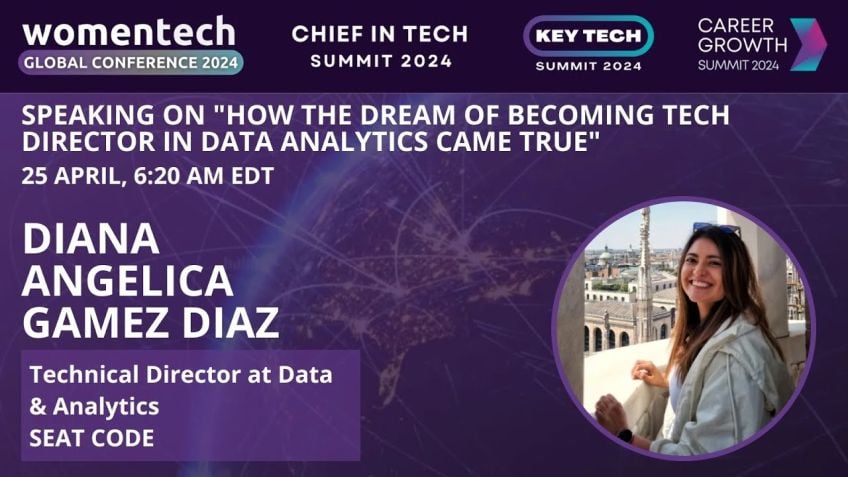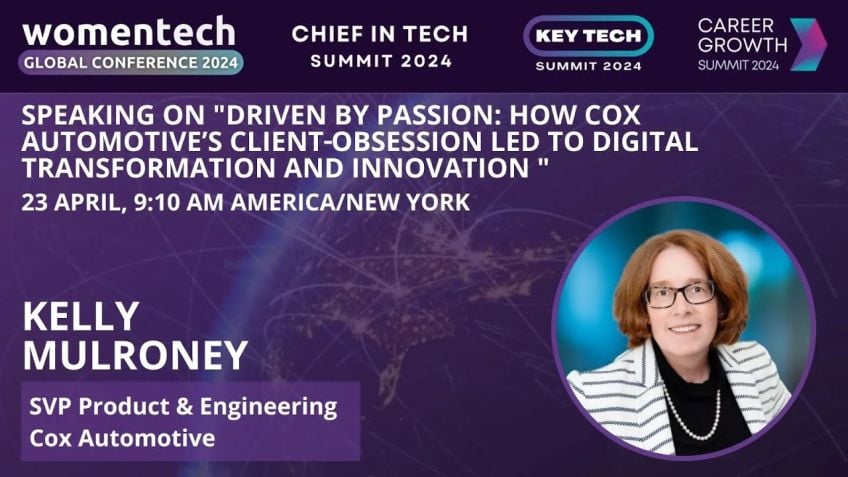The future is Tech-in-the-loop! What it is and why you should care.
Transforming Tech Industry with TILT: Human-Centric Approach
Hello, I'm Alessandra Chiquita, founder of a top-notch consulting firm that assists businesses in creating products with high impact. Today, I'll introduce you to an interesting concept- Taking In The Loop (TILT), a framework I developed and effectively use in my work.
The Spark Behind TILT: Human Centered AI
The genesis of TILT commenced with my research on Human Centered Artificial Intelligence (AI). A paper I stumbled upon drew an analogy to the Coper revolution. It revolved around the method utilised in AI known as 'human in the loop', where machines are central, and humans provide input to enhance their learning capabilities.
The paper suggested a 'second Coper revolution' - positioning humans in the center with AI revolving around. This implies that AI must be developed in a way to support and enhance human life quality. Hence, tech adoption should transition from 'AI in the loop' to 'Tech in the loop'.
However, I realized that this concept needed to be expanded. I envisioned tech having satellites revolving around humans, focusing on various factors that impact tech and human life quality. Consequently, TILT was evolved.
- Ethics: With increasing discussions around ethics, it is evident that tech products must conform to ethical standards.
- Diversity, Equity and Inclusion: Tech must also pay heed to ensuring diversity and inclusion in its creation and application.
- Human and User Experience: Understanding people’s preferences is pivotal in achieving a market impact, as well as improving people's lives.
- Innovation: Cycles of innovation need to be understood to determine which tech can help achieve the desired goal.
- Human Control: Trust in technology must be re-established, with users having more control and transparency over tech they're using.
Applying TILT to Emerging Technologies
Emerging technologies, such as Artificial Intelligence, can greatly benefit from the TILT approach across all mentioned aspects. With a growing focus on ethics and diversity in AI, groups have been established to audit and ensure these aspects in AI development. The surge in human-centric perspectives in tech points to the need for a user-centered approach. Transparency and human control are central to rebuild trust in technology. A critical question that arises - is AI the answer to everything, or should we focus on using tech that best fits our needs and goals?
The Future of Tech: A Different Approach with TILT
The tech industry is flooded with innovations, brilliant ideas, and countless startups. To stand out, we need a different approach - and that's where TILT steps in. The tech world has evolved to the point where creators and users aren't separate entities anymore. As digital users, we seek tech with high user-friendliness and don't stop until we find something which fulfills our goals.
TILT is not just a theory - consciousness about user needs and demands are on the rise, and tech creators are increasingly being pushed to adapt. As we step into this exciting new period in the world of tech, remember - TILT isn’t just about building tech; it's about building experiences that enhance the quality of human life.
Feel free to connect with me [here](https://www.linkedin.com/in/alessandra-chiquita/) on Linkedin for more discussions on TILT and other exciting tech topics.
If you have any queries on TILT, please don’t hesitate to get in touch. I’d be more than happy to walk you through how it can play a role in building a tech product.
Thank you for your time! I’m looking forward to working together to build tech that puts humans in the center and AI in the loop.
Video Transcription
Good morning, everyone. At least for the people that are in, in, in Europe. I'm Alessandra Chiquita. I'm the founder of a re a consulting company that support businesses in building high impact products.And today I want to talk with you about this concept uh taking in the loop that uh uh I created. There is a framework that now I use for my work. And I want to tell you why I think this is going to be the future. So everything started with a research that I was doing on Human Centered A I and I came across this uh this paper which is a very nice paper. It's not a technical one. Uh It just uh uh brings a fresh perspective to Human Centered Artificial Intelligence. And the author was uh using this analogy uh to the Coper revolution. He was looking at the method that is used in artificial intelligence, which is called machine in the loop. So uh sorry, human in the loop. So the idea is that machines are at the center and uh humans uh provide input to help the machine, the machines learn better and faster. So the idea is to have artificial intelligence in the middle and have the humans going around as a support to the machines themselves. So he to explain human center A I, he sort of introduced this second Coper revolution. So the idea here is to put the humans in the middle and have artificial intelligence going around.
So the goal here is to make sure that artificial intelligence is built in a way that supports uh humans and improves humans quality of life. Uh He was talking about, you know, using Human centered design, a special approach to user experience. And I thought it made sense. And I also thought that uh not only artificial intelligence should be built that way, but all tech should be built. So I thought instead of having uh artificial intelligence or machine in the loop, we should all move to tech in the loop. And by following the analogy that he was using uh then uh t taking the loop or tilt as I call it a little bit shorter should look like this. So we have the humans and then we make sure that tech is built to uh with a Human Centered approach uh in order to improve quality of life. But while I was uh uh working on this, at the same time, I was working, I was trying to put together a framework to support the work that I do uh with uh with uh my clients and I realized that it wasn't enough I realized that there were other things that needed to be brought in that this whole concept needed to be.
Uh So, so to say exploded, you know, a little bit uh making a little bit bigger and bring in more things. So I, I thought that to stay, you know, in the, in the universe thing and the, and to keep going with the Copernican revolution, I thought that tech should actually look like more like Neptune. So tech should have satellites while going around uh humans and the satellites should look at all these uh uh aspects that have an impact on tech and on our quality of life. Uh So Neptune has 14 satellites actually here, we don't have 14, we have six, but based on which tech we look at, we might have more, but these six are the basic ones, some of them are immediate uh some others needs a little bit uh more thinking. So the first one is ethics, there is clearly a lot going on uh about ethics. We uh hear uh talking about it uh more and more. So it's becoming clear that uh uh tech and tech products uh cannot ignore ethics anymore. So we have to make sure that while building a tech product, we do include an ethical approach, the other one is uh uh diversity, equity and inclusion. This is also uh people are paying more and more attention to it.
And while in the past there was no talking in the tech world about uh uh such a topic today. It's also here. It's not possible anymore because we know that tech has an impact and we need to build tech by coming from that perspective, by wanting to be diverse, by wanting to be inclusive and then we have human experience and user experience. So, so in order to have really an impact on the market, we need to uh in general on uh on people's life. You need, we need to understand where people are coming from. So user experience is the moment the person reaches the the tech and human experience starts even before. So if we really want to support people's life, if we really want to have an impact that we cannot build tech, ignoring what people want, their, their uh um their plan for using our products. So we have to start from there actually. And then we have innovation, innovation grow goes through cycles and uh we need to be sure to know exactly which cycle we are. And actually before that, after we find out what kind of uh problem, what kind of uh improvement we want to introduce.
That's the moment to look at innovation and really understand the cycle of innovation, what tech we want to use to achieve that goal. And at which point of the cycle the tech is I I have here the uh as the last one, but this is really not the last, in terms of importance, it's something that I keep repeating uh uh very often human control in the past years. Uh with uh so many things that have happened around us, we have gone from a place of trusting completely tech. So by being excited by using tech to a point where we are not so sure we trust it. Actually, we distrusted. So many things have happened. And now when we have a piece of tech, you know, or when we use a new technology or when we log in into a new website, we always ask ourselves, OK, but you know, how is this gonna work? How are you gonna use my data? What about privacy? So it's uh it's something that we need to accommodate, we need to build that trust again with our products. So once I started working uh with this uh with this framework, uh I realized that uh it was applying uh really to uh uh emerging, especially to emerging technologies. Uh And I would like to share with you, you know, uh how to look at an emerging technology from the tilt approach.
And since everything started with artificial intelligence, I thought the best best example would be to go back with you to artificial intelligence and look at really every satellite that we have that we have in tilt and see whether it really applies to artificial intelligence.
So the first one, these ethics uh as I said in the previous slide, there is so much going on around ethics and so many groups that have borne specifically to look at artificial intelligence and ethics. Here, I have just listed really few. Um So for humanity is building an independent audit for uh artificial intelligence and uh automa automation in general to check really that the algorithms and the machines are built in an ethical way. Um Then we have all tech is human, all tech uh uh does the same thing. But with a general approach to tech, uh then we have the Massu the Montreal Artificial Intelligence Ethics Institute, the A I Ethics Labs. I mean, really, these are really just few people are looking into this people. Uh wanna be sure that the tech that surrounds us is doing good for us and not spoil like exploiting our vulnerabilities, not using our information. We are not willing to accept that anymore. And this is when I say that, you know, uh for some things, for many things that have happened, we have lost trust. And on top of that, uh uh the European Commission also announced the new A I regulation, they just released a draft of the regulation, but it is coming.
So we cannot ignore uh ignore it anymore if even law is going in that direction and we don't want to ignore it anymore. So tech should be built in an ethical way. Then I talked about diversity, diversity, equity and inclusion that everything started a few years ago when, at some point, I think this was really the first case, you know, uh a recruiting tool that was using artificial intelligence. I'm pretty sure you've heard about it at some point, it showed that it was biased against women. And from there it was like a rolling then they found out that it was not just women, but it was like uh favoring white men. So also people of color uh were, were excluded and then uh not just recruiting to but many other uh artificial intelligence algorithms were proven to be biased in a way or in another. And uh there are research groups looking into this for every algorithm that is put out there, especially from big corporation, they are analyzed, you know, and call out in case they show some form of racist. So even here, I don't think it's a good idea to ignore this but should be included in the process of building artificial intelligence. And then we have human user experience or human centric. Well A I is is everywhere.
Uh it's uh coming more and more in different sectors and it's not a case that we hear very often human Centricity, um pain as Centricity. Even Gardner uh by the end of last year announced that one of the tech innovation trends was going to be people Centricity. If uh it's such a technology has such an impact, it has to be built around people uh that's something we can that we cannot ignore. And this is more of a provocative thought, a provocative question that I want to just uh uh throw out there to you. Um Artificial intelligence is a hype at the moment and uh I there is a lot going on. Uh investors want to invest in artificial intelligence. Uh But my question is, is really artificial intelligence, the answer to every everything because there are some, some projects where I see a clear feet and a and an added value, but there are some others, there is questionable and I am not uh uh supportive of following the hype.
I always think we should use the tech that is really best for the goal that we have. And the last one, but my favorite is human control. So uh as I said, we don't trust tech anymore. And uh um there was a research published no long ago that looked into a very good cybersecurity solution. And the reason why nobody was actually using it. And even though it was so good and uh uh the result you know, of this work was that actually employees from this company, they just didn't trust. So they complained that they didn't know they didn't understand how it worked. They didn't know how to set up initially and uh they wanted to understand more, but nobody took the time to explain. And the biggest fear was that what if you know uh a mistake is made at who's gonna be fired, the employee or the machine. So clearly, we need to have more control. And in order to give control to the users, we have to be transparent. So this is uh something else that I I believe, I truly believe in. So why do I believe this is the future? Because this is the current situation every day. We have so much tech coming to us, so much innovation, so many brilliant ideas, so many start ups, there is so much noise.
And in order to stand out, in order to make an input, we have to follow a different approach, we cannot do what we were always doing. We need to change. And the second thing that to me is very important is that there was a time where the war, people build technology and people using technology. The line doesn't exist anymore. We all use technology. We are all digital users and we know that either we are given exactly what we want or we will just move on to the next topic, to the next story, to the next session. Oh, sorry to the next product. And uh the idea is that we will stop when we find what more or less, what we want, something dissimilar to what we want. Otherwise we will keep moving on because we know and this is the part that I love the most. We know that now we can choose, we have a lot of choice out there. We don't need to be stuck with something that is not what we want or not, what we like. And with this, I wanna thank you uh to be here with me today. I have posted in the chat, my linkedin, so I'd be super happy to connect. This is my Twitter handle. Uh And uh if you have any question, we have five more minutes. Uh I'm super happy to answer. Uh uh all the questions you have nevena.
Good morning to you. Thank you for uh uh uh being here with and, and sharing that you find it interesting. Uh Thank you, Susan. Now for sharing that you're loving the session. I hope this session brings a new light to how in my opinion, technology should be built to the new approach uh that we should, we should have and yes, introducing bias in tech is extremely uh easy. That's because we are humans and tech is built by humans and even with uh with machine learning, now there is, I'm not gonna go into details like there is a new uh a new uh approach that might even remove the human in the loop concept to avoid bias. But the initial setup in artificial intelligence is given by a person. And if that person brings in uh bias, the machine builds on the bias and it will be more and more biased. So it's extremely easy to do that. The good the good news is that we are aware, we are now aware, we live in a, in an era where uh we know our power as users, we know we can be demanding. We don't have to accept anything and uh um we can ask for more and this is what's happening. There is a lot of talking out there. And the good thing is that corporation, all the people that have built tech and imposed, impose it on people.
Uh We are at the point where, where they can do that less and less. So, yes, this is uh uh if any of you is interested, maybe because I still have a few minutes and I don't see questions coming coming in. I also have a on this, I have a, a newsletter because Tilt is a concept that I uh that I created. So if you people are interested in that every two weeks, I share a, a newsletter with the things that I come across that I like the most, you know, with the things that I think are useful to build, to build tech. And uh um I'll be super happy, you know, if you want, let me check that this is really the right because when being in a rush and talking, yes, that's the right uh the right link. I didn't mistype it. Uh You can also uh you can also read there, you know, the things I come across, the things I study uh myself because I think this topic is very fascinating on um under many, many aspects. So, so, uh so I see that there are no questions. I uh but I read that people think that's interesting. So I thank you very much for your time spent with me uh today. I hope to connect uh with you all.
And uh uh I hope you have enjoyed, I, I read that this seems the case and I hope there are no questions because I've been so good at presenting it that everything was super clear. And uh thank you very much and I wish you a great day, a great continuation with this uh amazing uh uh conference. And uh I'll hope to see you again soon, somewhere else. So, goodbye.





